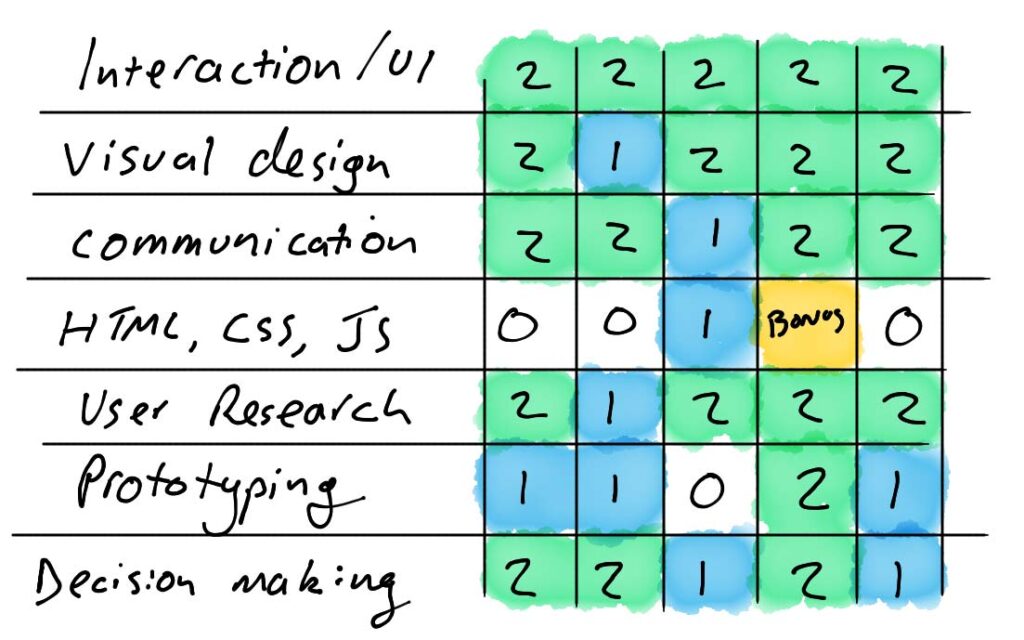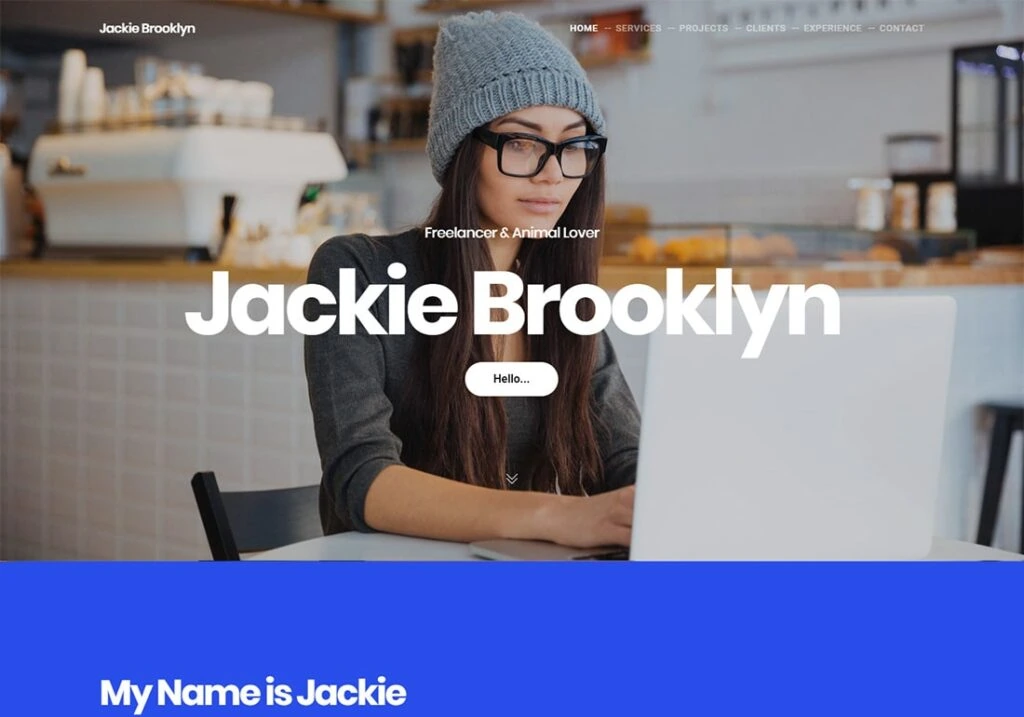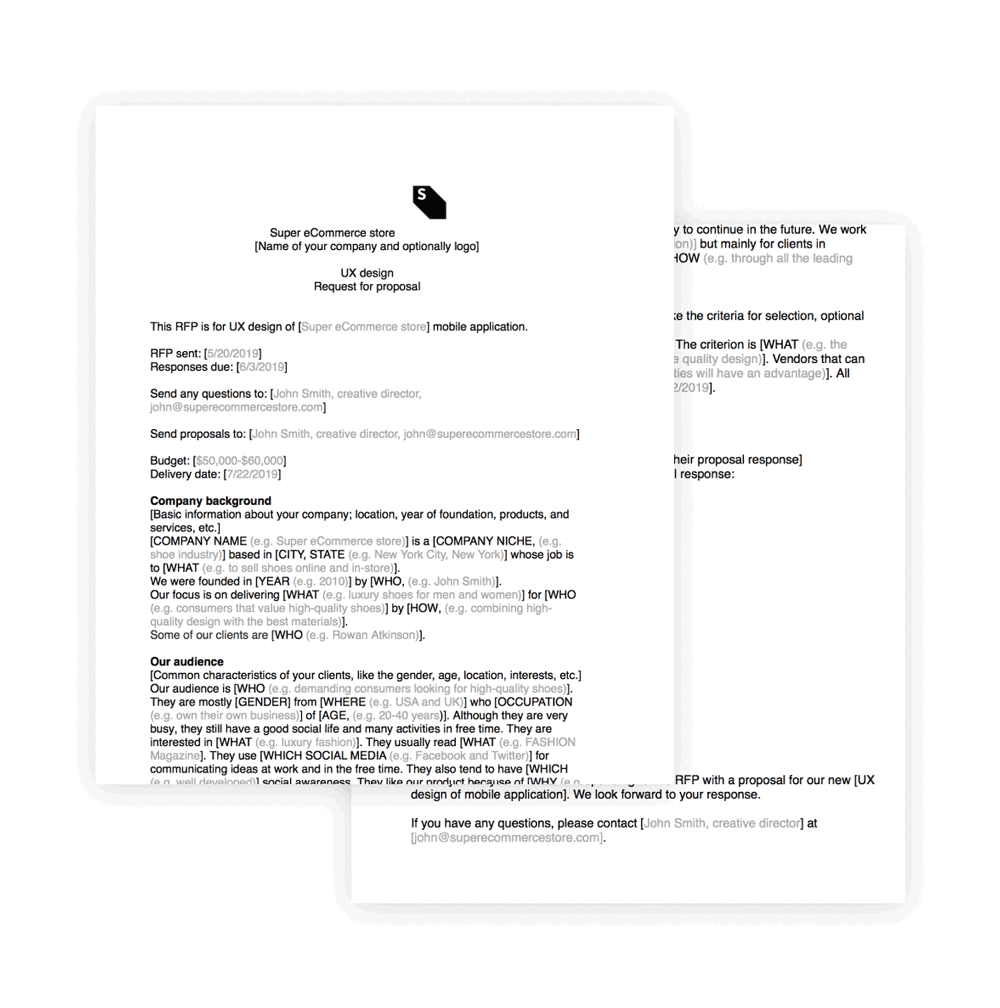Top 20 Tips for Going Freelance: Ultimate Checklist
Going freelance is an exciting and liberating career move. Being your own boss, setting your own hours, and having the freedom to work on projects you’re passionate about are significant perks. However, freelancing requires dedication, self-discipline, business savvy, and managing multiple roles beyond your core professional skills. If you’re considering taking the plunge and going freelance, use these tips to set yourself up for success.
Table of Contents
Assess Your Skills and Interests
Before quitting your day job, take time to reflect on your capabilities, passions, and professional goals:
- What are you good at? Identify your stand-out hard and soft skills. These should be the basis for the services you want to offer clients.
- What topics excite you? Make a list of subjects and industries that get your creative juices going. Use this to shape the type of freelance work you pursue.
- What are your professional goals? Do you want to work for yourself full-time or supplement your existing income? Determining intended hours and income expectations early allows you to plan accordingly.
Identifying strengths, interests, and ambitions guides branding, marketing, rates, and long-term business decisions.

Beef Up Your Qualifications
Next, objectively assess any skill, education, or experience gaps you may need to fill to offer your desired services:
- Get certified. Consider earning certifications or credentials related to high-demand skills to validate capabilities to prospective clients.
- Strengthen abilities. Self-study via online courses and resources. Identify skills critical to the type of freelance work you want and dedicate time to substantially improving them.
- Gain insider knowledge. If aiming to specialise in a particular industry, learn the lingo, prominent thought leaders and publications, ethical standards and guidelines, etc. Subject matter expertise earns client trust.
Shoring up your background and abilities invests in your freelancing future by equipping you to provide quality services.
| Type of Qualification Upgrade | Benefits |
| Hard skills training | Gains expertise to offer in-demand services |
| Specialised credentials | Builds credibility with target clientele |
| Industry knowledge | Earns client confidence and loyalty |
Establish Your Brand Early On
As an independent professional, your brand is the foundation for marketing and client development. Before officially launching, proactively shape how you want to be perceived by determining the following:
- Your niche. Avoid advertising broadly as a general “freelance writer” or “social media manager.” Specialise your services around focused skills, industries, deliverables, clients, etc.
- Ideal clients. Identify the specific types of customers you most want to serve based on values, budgets, personalities, etc. This firm target audience makes marketing more efficient.
- Your superpower. Articulate what makes you the best fit for your ideal clients over competitors. Ensure this unique value proposition permeates your brand identity and all marketing.
- Brand personality. Decide on consistent messaging, visuals, tone, etc., that communicates your niche, ideal client, and superpower and sets you apart.
Deliberately developing these pillars in advance allows you to cultivate your reputation from the ground up strategically.
Craft a Memorable Brand Slogan
Condense your brand identity into a catchy, descriptive slogan in no more than ten words. Feature it prominently on your website and business materials. Here’s a template:
For [ideal client], I provide [niche services] that [benefit statement].
Slogans telegraph core offerings at a glance, so perfect yours.
Structure Your Business intentionally.
Freelancing allows tailoring your business model to suit your professional style. When establishing your solo operation, factor in:
Your Preferred Work Dynamic
- Collaborative or independent? Do you thrive directly supporting clients or require autonomy to do your best work?
- Variety or specialisation? Are you energised by working on diverse projects or prefer developing subject matter expertise through repetition?
- Full-time or supplemental income? How many weekly hours do you want to be dedicated to freelancing long term? Differences impact everything from workload to finances.
Structuring around preferences sustains motivation and avoids burnout.
Logistical Factors
- Admin systems. Invest upfront in project management, invoicing, client CRM, and accounting systems tailored to your workflow needs—Automate administrative tasks when possible.
- Hardware/software. To deliver quality work efficiently, ensure you have sufficient computing power, data storage, programs, subscriptions, etc. Don’t cut corners on critical tools.
- Workspace. Whether working from home or leasing office space, create an ergonomic, professional environment without distractions. The area should nurture productivity and client interactions.
Handling backend operations and logistics effectively eliminates hassles during active project work.
Learn the Art of Pricing Services

Determining competitive yet profitable rates for your services takes research and periodic adjustment. When initially setting fees, examine:
- Industry averages. Use pay rate tools like PayScale, Salary.com, Reed, etc., to gauge average freelancer income by profession, skill set, experience level and location.
- The local market. Search job boards and freelance sites to learn what those with similar expertise charge clients in your region.
- Production time. Track how many hours various deliverables require, from consultations to edits—estimate fees covering your specialised effort.
- Operational costs. Account for all ongoing business expenses when calculating minimum rates like taxes, insurance, subscriptions, marketing fees, professional development, etc. This overhead percentage boosts quotes.
- Value pricing. For speciality services, base rates on your value vs hourly input. Quantify deliverables’ impact on clients’ business metrics.
Revisit pricing annually to adjust for inflation, skill growth, etc. Some increase rates by 5-10% yearly to keep pace with living expenses. Staying informed on industry and regional trends protects both profit margins and competitiveness.
| Pricing Factor | Description |
| Industry Averages | Benchmarks from national pay rate sources |
| Local Market Analysis | Regional earning potential for your skills |
| Production Time | Hourly rate covering your workload |
| Overhead Costs | Accounting for fixed business expenses |
| Value Pricing | Charging for results created vs. effort |
Create a Portfolio That Wows
Showcasing past work is essential for demonstrating expertise to prospective clients. Curate 4-7 diverse writing samples, design projects, and strategic plans — whatever best represents capabilities in your niche. Aim for pieces:
That Prove Proficiency
- Technically sound. Samples should spotlight mastery of critical skills, methodologies, creative approaches, etc., offered to clients.
- Visually appealing. Images, videos, reports and other samples should utilise modern, professional formatting.
- Concise snippets. For lengthy deliverables, provide abridged versions or excerpts showcasing your finest moments.
Pieces should instil confidence you can deliver quality work efficiently.
Aligned With Target Clients
- Relevant examples. Feature work similar in scope, format, and industry to projects desired clients would commission. Show, don’t just tell what you can do.
- Client logos. Displaying reputable past clients builds credibility, especially early on. Gain permission first and omit sensitive details.
- Variety. Unless highly specialised, include samples demonstrating adaptability across deliverable types, visual styles, content areas, etc.
When prospects see portfolio congruency with their needs, conversions rise.
Craft an Effective Website

Your site is often the first impression for potential clients initially evaluating your services. Ensure every website element – copy, images, layout, features – presents a polished, professional brand.
Use Clear, Concise Copy
- Succinct tagline. Summarise services offered in a quick, memorable phrase right below the headline.
- Personable bio. Share your background and what motivates you in three short paragraphs on the About page. Give them a glimpse behind the scenes to connect.
- Easy to scan. Break long sections into bite-sized paragraphs, bulleted lists and ample headers. White space improves skimmability.
Every phrase should move site visitors closer towards hiring you.
Include High-Quality Images
- Profile photo. Lead with a crisp, well-lit headshot that shows your face clearly. Avoid casual snapshots, memes or emojis.
- Work samples. Display portfolio examples as significant, high-definition photos or embedded media files to showcase quality.
- Minimal stock imagery. While appropriate in moderation, prioritise showcasing your original brand imagery.
Images should reinforce expertise and transparency.
Guide Users Towards Action
- Clear call to action. Use strategically placed buttons across all pages prompting visitors to “Contact Me” or Request Services”, etc.
- Concise lead gen forms. Collect essential info like name, email, and project needs to nurture leads.
- Easy to find contact info. Display phone number, email and social media links prominently on the header and footer.
Reduce barriers stopping prospects from getting in touch.
Leverage Content For Organic Marketing
Well-executed content builds brand awareness and trust with potential customers before you ever speak. Experiment with:
Guest Posting
Contribute free articles or videos to reputable publications your target clients follow. Ensure usefulness over self-promotion.
- Surveys indicate that 21% of consumers are likelier to think highly of freelancers publishing off-site content.
Social Media
Share media samples, productivity tips, industry insights and lifestyle snippets to nurture an authentic connection with your audience.
- 70% of freelancers report successfully acquiring work through social media referrals.
Email Newsletters
Send monthly or quarterly updates to opt-in subscribers highlighting achievements, unique value props, and helpful tools.
- 48% of email subscribers made a purchase based on a newsletter recommendation.
The more value given freely, the more quality leads it will generate.
Refine Your Sales Pitch

When potential clients inquire about your services, your reply email or initial consultation tremendously influences whether they hire you. Craft a sales flow that persuasively positions you as the ideal fit for the job.
Lead With Benefits
Address prospect pain points immediately by highlighting deliverables, processes and values that set you apart:
✔ “Thanks for your website redesign request! My optimised sites load in under 2 seconds to prevent visitor dropoff.”
✔ “Great to connect regarding copywriting support. My background in behavioural psychology helps craft campaigns that resonate.”
Show them you already understand their needs and offer solutions.
Ask Intent Questions
Gather crucial details early about their expectations, priorities, preferred working style, budget range and decision-making timeline:
- What factors are most important to you in selecting a freelancer?
- When needed to be completed?
- What is the approximate budget you’ve allotted for this project?
- Who makes the final hiring decision?
Modifying your proposal based on intel builds rapport and positions you favourably against the competition.
Set Clear Client Expectations
Prevent misunderstandings down the road by outlining the scope of work, rates/fees, revisions process, terms of use and other policies during onboarding:
- Project Scope document or creative brief – Provides an overview of deliverable specifics, outlines mutual responsibilities, and defines what constitutes successful completion of work. Both parties sign this.
- Project Proposal or Estimate Letter – A document listing all service charges and payment terms so no surprise expenses crop up later.
- Freelance Service Agreement/ Contract – A legally binding document protecting freelancer rights should clients attempt to exploit work or not fulfil payment obligations. Outlines project details, timeline, rate, invoicing procedures, and other terms and conditions.
Investing time upfront and managing expectations minimises conflicts and builds trust as the working relationship develops.
| Type of Expectations Document | Purpose |
| Project Scope or Creative Brief | Deliverable details and mutual responsibilities |
| Project Proposal/Estimate Letter | Outlines all charges/payment terms |
| Service Agreement/Contract | Protects payment rights and project parameters |
Refine Your Client Onboarding Process

A structured onboarding procedure ensures all bases are covered when contracting new clients:
1. Review Project Scope
- Re-confirm deliverables, responsibilities, timeline, and success metrics before kicking things off.
- Share a checklist of info/resources you need them to provide to complete work.
2. Send Contract Agreement
- Formally outline legal payment terms, usage rights guidelines, cancellation policies, etc.
- Collect deposit payment or retainer fee if required.
3. Schedule Kickoff Call
- Touch base to address outstanding questions.
- Introduce key project team members during more significant collaborations.
- Start forming rapport that encourages open communication.
Doing these steps disciplinedly immediately improves client and freelancers' satisfaction in the long term.
Automate Finances From The Start
Between tracking billable and non-billable hours, collecting payments and calculating quarterly taxes, independent professionals log serious financial admin hours. Allocate energy upfront to:
Time Tracking
Use timekeeping apps like Hours or Clockify to monitor all hours worked across projects. Data is easily transferred to invoicing and helps refine quotes.
- 73% of full-time freelancers admit to losing billable hours by estimates being too low for the work required.
Invoicing
Invoice quickly upon completing project milestones or agreed recurring periods—Automate reminders for efficient payment collection.
- Small business clients pay an average of 16 days late. Don’t float their expenses.
Bookkeeping
Link financial accounts to maintain organised records to streamline quarterly taxes. Dedicate an accounting app or one drive folder to house receipts, contracts, etc.
- Around 20% of a freelancer’s pretax income goes towards filing self-employment taxes.
Handling finances proactively eliminates 11th-hour fire drills each quarter and year-end.
Stick To A Productive Routine

Without office hours imposing structure, freelancing allows custom tailoring daily routines for peak performance. Over time, design an intentional regimen that includes the following:
Work Block Scheduling
- Assign set hours for deep work around your energy peaks without distraction.
- Protect blocks on calendars to avoid double booking.
- Batch similar tasks to capitalise on momentum.
Intentional Breaks
- Build in 10-15 minute breaks every 90 minutes to rest, stretch, snack, etc.
- Take a proper 30-60 minute lunch break away from screens.
- Incorporate brief hourly microbreaks for quick tasks.
Daily Targets
- Set a defined daily word count, contact or revenue goal to motivate focused effort.
- Timebox hours for passion projects around client work to prevent burnout.
Committing to structures that maximise output sustains consistency amidst the flexibility of freelancing.
Cultivate Your Support Network
While working independently has perks, isolation can take its toll over time without a team to collaborate with daily. To supplement professional camaraderie:
Attend Conferences
- Identify annual local and national conferences to connect face-to-face with fellow solopreneurs.
- Follow speakers working in your niche across social media channels for added community.
- 73% of attendees report conferences generating new partnerships and referral opportunities.
Join Masterminds
- Join a mastermind group of 6-8 freelancers in similar fields, meeting 1x/month to workshop challenges.
- Check sites like Mastermind Jam or local business groups.
- Mastermind members experience an average revenue growth of 28% annually.
Seek Out Mentors
- Request structured advice from those further along by participating in formal mentorship programs.
- Or informally connect with freelance role models you admire for quick coffee chats.
Intentionally expanding your network builds camaraderie and ensures continued growth.
Refine Your Proposal Process

Submitting polished proposals is essential for converting client leads into paying work. Develop a streamlined system for preparing custom quotes that impress every time:
Tailor To The Client
- Do your research. Review their website, case studies, leadership bios and press coverage to understand objectives.
- Use existing language. Weave in vocabulary and terminology from briefs to show alignment.
- Note complicating factors. If a limited budget, tight timeline or other constraints apply, address how you’ll still deliver.
Demonstrating fit earns trust that you grasp their needs.
Outline Process & Deliverables
- Define milestones marking project progress from kickoff to completion.
- Breakdown-specific deliverables are included so expectations stay clear.
- Highlight your methodology, explaining what makes your approach effective.
- Share work samples illustrating what finished products will resemble.
Being ultra-specific builds confidence you understand the scope.
Emphasise Value
- Quantify business impact, explaining how your services will save money, make money or cut costs for the client.
- Compare inferior options that cost less upfront but don’t move critical metrics.
- Future vision: what ambitious but achievable next steps do you recommend upon project completion?
Remind prospects why quality work drives ROI long-term.
Keep Your Tech Stack Cutting Edge
Mastering the latest programs and digital tools improves productivity and results. Annually audit your freelance tech stack by:
Researching Top Services
- Reading software roundups in major publications each December announcing the year's best apps for creatives, freelancers, entrepreneurs, etc.
- Follow key influencers in your niche across blogs, podcasts, YouTube, etc., to learn what’s working for them.
- Asking colleagues about new programs they've successfully incorporated.
Multiple perspectives reveal potential upgrades.
Trying Before Buying
Explore free trial versions before committing to determine if promising platforms are user-friendly and improve critical workflows.
Allocating Testing Time
Schedule focused hours on your calendar to thoroughly learn new technology through tutorials before integrating it into active client projects. Rushed adoption wastes the investment when tools confuse instead of optimising work.
Budgeting For Upgrades
Factor in at least 5-10% of revenue towards new tech tools and continuing education annually as fundamental business expenses crucial for growth.
Set Your Income Goals

In the early days of freelancing, covering costs and having flexibility may sufficiently meet professional and lifestyle needs. But over time, revisit income goals to ensure you continue advancing.
Benchmark Your Current Income
Track monthly profit year-to-date and document recurring operational expenses. This baseline awareness empowers smart target setting.
- Full-time freelancers in the US earn an average of $56k annually.
Define Your Version of Success
Determine the annual pre-tax profit level that affords your personal, family or business vision of “success” right now. Permit yourself to dream big.
Reverse Engineer Goals
Break intimidating yearly targets down into required monthly revenue and weekly billable hours. This makes the metrics more actionable and trackable.
Build Slow & Steady
Set tiered 1-3 year income goals allowing gradual ramp up that won’t sacrifice work-life balance early on. But ensure ultimate targets align with your grandest ambitions.
Diversify Your Clientele
While grabbing any paying work early on is understandable, developing a selective and diverse client roster protects long-term income stability should one organisation abruptly cut ties.
Limit Client Concentration
Your annual earnings should be evenly distributed across at least 3-5 consistent clients to avoid overreliance on one source.
Work Across Industries
Pursue work with companies in varied sectors to minimise vulnerability should specific sectors experience downturns.
Mix Project Types
Counterbalance simple recurring work like social media support with complex contract projects should either underdeliver income any given month.
Seek Ongoing & Project Work
Secure some retainers for guaranteed recurrent hours, plus leave flexibility for short-term initiatives.
Balancing your client portfolio to hedge risk enables embracing the exciting uncertainty of freelancing with greater peace of mind.
Develop Your Leadership Skills

While initially freelancing appeals to avoid office politics and people management, which many crave, growing your business long-term often requires leading teams.
Learn To Delegate
Assess what tasks no longer require your specialised skills that could be supported by contractors, virtual assistants, etc. Start small until you’re comfortable directing others’ work.
Supervise Select Clients
Recommend trusted freelancer connections to leads requiring niche expertise outside your wheelhouse. Provide art direction and quality assurance.
Form Strategic Partnerships
Join forces formally with complementary freelancers to expand service offerings for clients seeking end-to-end oversight.
Study Management Frameworks
Read leadership books and take courses on effectively nurturing company culture, resolving conflict, coaching employees, etc., as you scale up.
Honing managerial abilities future proofs your goals.
FAQs about Going Freelance
What type of business entity should I form when freelancing?
When starting, most experts recommend freelancers operate as sole proprietors using their social security numbers for tax purposes. It’s the most straightforward route. If landing more prominent clients or are concerned about liability, explore forming an LLC or S Corp.
How often should I invoice clients?
Industry best practice is to invoice clients every two weeks or upon completion of project milestones. This increases cash flow visibility rather than relying on a single payment. Be sure to detail what specific work or deliverables the payment covers.
When should I raise my freelance rates?
As you gain experience, it is essential to reassess rates every six months. If you consistently turn away new business due to bandwidth, increasing fees during your next client review cycle is a sign of maximising income. A slow, steady rate of growth is ideal.
Conclusion
Transitioning to freelance work empowers seasoned professionals to take control of their careers. By proactively making essential preparations upfront, newly independent workers can ensure they thrive while avoiding common pitfalls. Use this comprehensive advice to set up the branding, marketing, operations, finances and mindset needed to meet your wildest career goals. Soon enough, you’ll be reaping the many personal and professional perks of successful freelancing. Best of luck in your pursuits!
